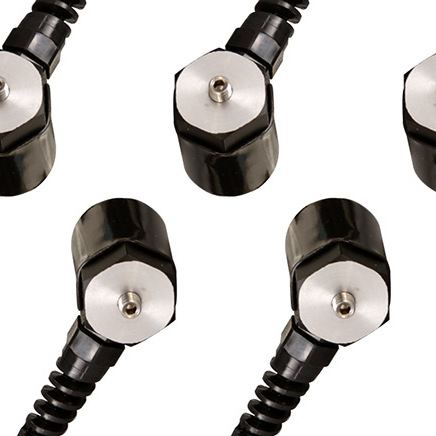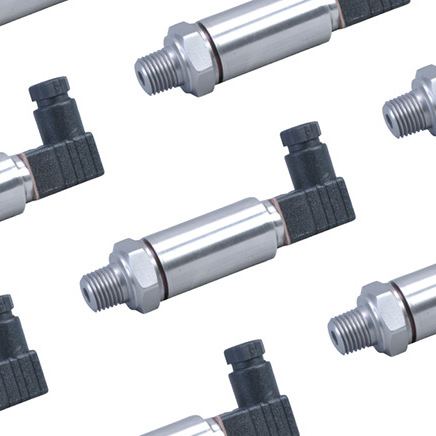Why Do I Need A Load Cell Summing Box?
A summing box or a junction box is necessary for a multiple-load-cell system. The box essentially consists of a passive or an active circuit that sums up all the signals from each load cell and combines them into a single output.
Why Use A Signal Conditioner For Load Cell?
A signal conditioner takes in the electrical signal, processes it and converts it to a more usable type of signal. They are very helpful in instances where the signal coming from the load cell does not have much clarity to it. A signal conditioner can perform a variety of functions to the signal to make it more legible for the digital measuring devices. it can perform the following functions.
- Signal conversion: Covert the signal to a new wave format or a different standard
- Filtering: Blocks out all the unnecessary data within the signal and sieves out only the required data
- Linearization: Structures the signal to adhere to the physical measurement
- Amplification: Increases the resolution of the input or the noise to signal ratio based on the requirements
How accurate are load cells
Accuracy plays a critical role when it comes to selecting any measuring apparatus. There are different classes of accuracy. Class A and B are high precision measurement classes where the devices find their applications in pharmaceuticals. Load cells belong to class C and D. Class C load cells are applicable in mechanical engineering and civil engineering. Class D load cells are useful to weigh produces like vegetables, meat, consumer goods, etc. Nowadays, class C strain gauges are also used for weighing produces.
What device is used to measure force
Force is generally measured in Newton and is measured using special apparatuses called force meters. There are several types of force meters available and they are chosen based on the requirements of the user.
Force can also be measured using force transducers based on strain gauges. A load cell is an example of a force transducer, which provides accurate force measurement. When force is applied on a load cell, the strain gauge deforms and generates a potential difference.
This change in resistance is proportional to the mechanical force applied. Different types of forces such as tension, axial, compressive, or twisting can be measured using a load cell.
What Are the Benefits of Using Load Cells with USB Output?
USB load cells are quick and easy to set up. The software provided with the USB load cells collects data from the load cells and allow engineers to turn their laptop or tablet into a virtual meter, chart recorder, and data logger. The data can also be utilized for further analysis/viewing. USB load cells do not need an external power supply as they get their power directly from the computer’s USB port.
Load cell vs strain gauge
A load cell is an application of strain gauge. A strain gauge is a sensor that creates a change in resistance when applied with a load. A strain gauge load cell has a strain gauge setup within itself to measure the load. There are other varieties of load cells that do not use a strain gauge for measuring loads, such as hydraulic load cells and pneumatic load cells.
Load cell vs potentiometer
A potentiometer determines the displacement of a subject. This property of the potentiometer is generally used to determine the force applied to a body. A load cell uses a potentiometer arranged in the orientation of a strain gauge to measure the force applied on a body. Load cells are much more accurate at sensing changes in force, hence they are better at taking even minute measurements.
Load cell vs pressure transducer
A load cell and a pressure transducer are both used for the same purpose that is to measure the force applied to them. The major difference, however, is that load cells measure the force directly, while the pressure transducer uses an indirect form of measurement. If we compare both on the accuracy of measurement, a load cell takes the win!
Load cell vs force transducer
A transducer is a device that turns physical force into electrical signals. Load cell and force transducer do the same thing. They covert physical force into readable values for the user. A load cell is a type of force sensor based on strain gauge while force transducers use piezoresistive force sensors. Instead of correlating the force with the deformation in a strain gauge, these types of force sensors measure the force directly.
The force applied to the sensor compresses the piezoresistive ink printed on the sensor, generating a change in resistance. Similar to the load cell, this change is proportional to the force applied and is calculated as per the required engineering force units. Force transducers that work on the principle of piezoresistance are less expensive than load cells, but they fall short when it comes to accuracy.
Load cell vs LVDT
A load cell is a sensor that can measure mechanical forces. It is commonly used in the measurement of weights. Load cells are contact sensors that are very accurate when it comes to the readings.
LVDT or Linear Variable Differential Transformer is a sensor that detects mechanical motion and vibrations. They are non-contact sensors that use electromagnetism to determine changes in relative position.
Load cell vs force sensor
A load cell is a type of measuring device that falls under the umbrella term Force Sensors. In other words, a load cell is one of the many types of force sensors. A load cell is a device used to measure mechanical forces. The most common application of a load cell is determining the weight of an object. Strain gauge load cell is one of the most popular of load cells.
They are only second to the precision weight measuring devices found in laboratories. There are other force sensors as well that work on the principle of piezoresistance to generate signals proportional to the force applied. They are light in weight and are flexible, making them ideal for OEM applications. However, these types of force sensors are less accurate compared to load cells.
- What is a Load Cell?
- Types of Load Cells
- Selecting a Load Cell
- FAQ
- Installing a Load Cell
- How to Wire a Load Cell?
- Troubleshooting
- Amplifiers for Load Cells
- Data Loggers for Load Cells
- Load Cell Meter
- Load Cell Controller
- Signal Conditioners
- Weighing Trucks, Trains, and Aircraft
- Dynamic Load Measurement
- Testing Load Tolerance in Cables
- Critical Component in X-ray Laser


